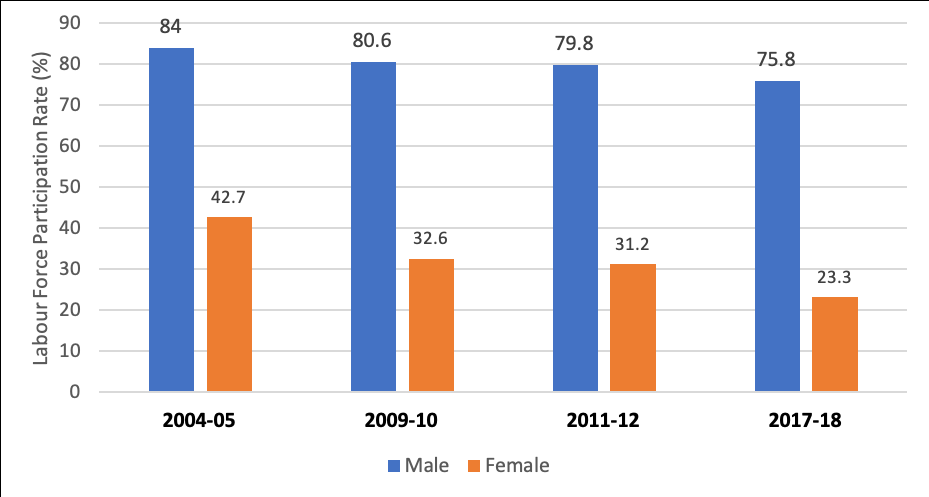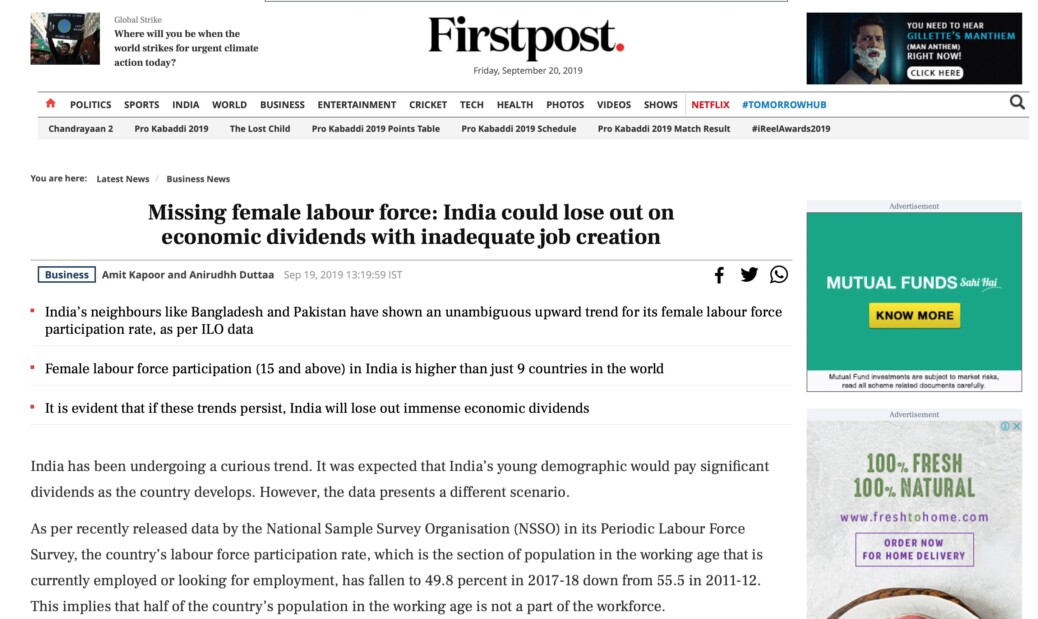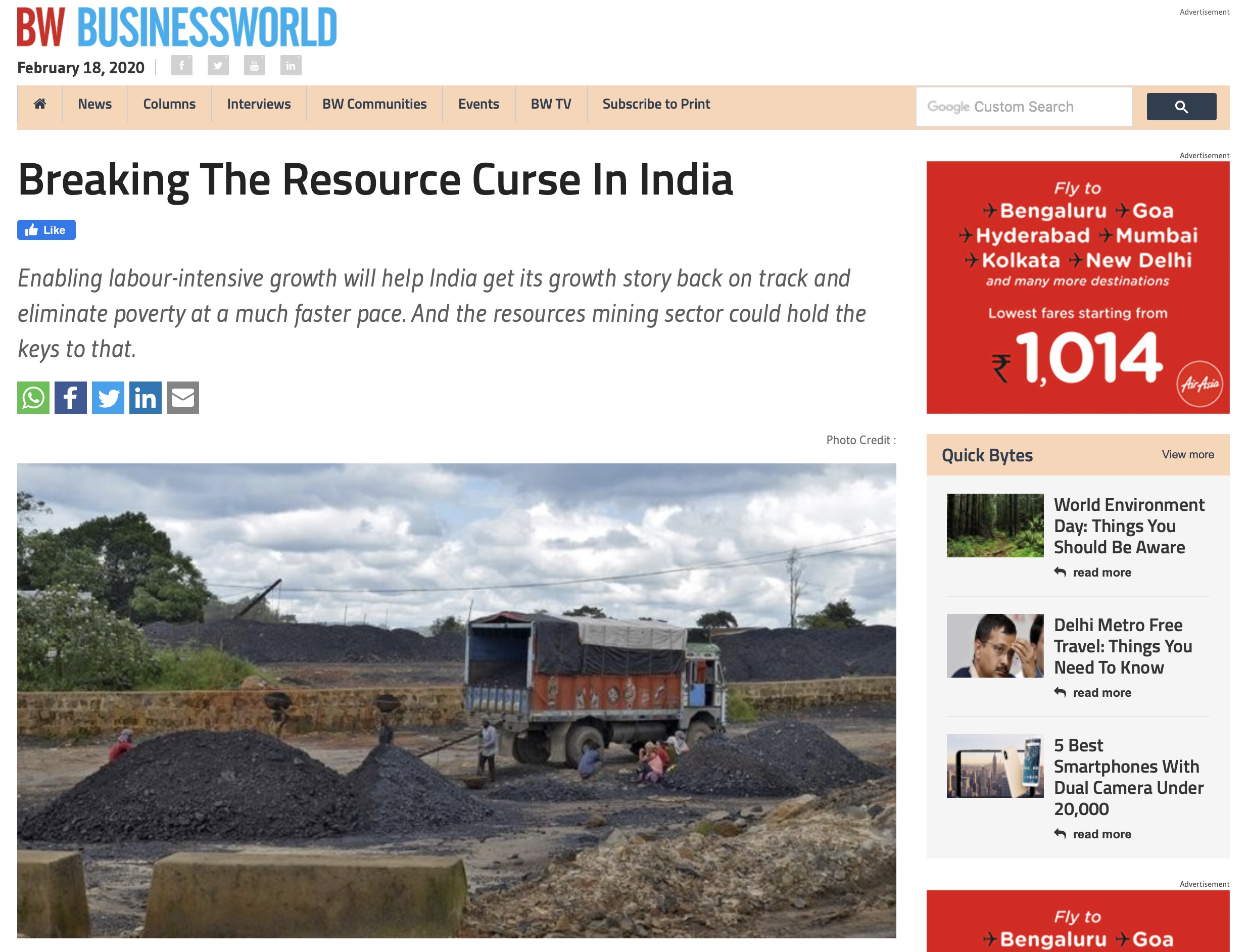India has been undergoing a curious trend. It was expected that India’s young demographic would pay significant dividends as the country develops. However, the data presents a different scenario. As per recently released data by the National Sample Survey Organisation (NSSO) in its Periodic Labour Force Survey, the country’s labour force participation rate, which is the section of population in the working age that is currently employed or looking for employment, has fallen to 49.8 percent in 2017-18 down from 55.5 in 2011-12. This implies that half of the country’s population in the working age is not a part of the workforce.
While this is concerning, an even more surprising trend is that of the female labour force participation across the country. As seen in Figure 1, while the labour force participation across gender has been falling over time in India, the downward trend is particularly sharp for the females. The female labour force participation rate – for the population aged 15 – has almost halved between 2004-05 and 2017-18 falling from 42.7 percent to 23.3 percent. The figure also shows that the gender gap in labour force participation has also widened during the period. The male labour force participation was twice as large as that of females in 2004-05, which has gone up to thrice in 2017-18.

Source: NSSO, Periodic labour Force Survey
Figure 1:Male and Female Labour Force Participation Rate (LFPR), India
Such a trend is inexplicable for an economy like India, which is still a lower middle-income country with respect to its per capita income. When income levels are low and an economy is developing, the labour force is expected to expand as more people are inclined to work.
For instance, India’s neighbours like Bangladesh and Pakistan have shown an unambiguous upward trend for its female labour force participation rate, as per ILO data. In fact, Figure 2 shows that female labour force participation (15 and above) in India is higher than just 9 countries in the world. Thus, India’s performance on this front has been quite puzzling.

Source: NSSO, Periodic labour Force Survey; World Bank Database
Figure 2:Countries with low Female Labour Force Participation Rate
It is quite worrisome that despite comprising half of the country’s population, Indian females contribute to less than a quarter of its workforce. A possible reason for this could be inadequate job creation and even where it was created, the sectors could not readily absorb the female workforce. It is evident that if these trends persist, India will lose out immense economic dividends that it could attain if the economy could effectively utilise its female population. While the country should focus on creating more quality jobs, it should particularly focus on creating wider economic opportunities for women as well.
The article was published with First Post on September 19, 2019
























